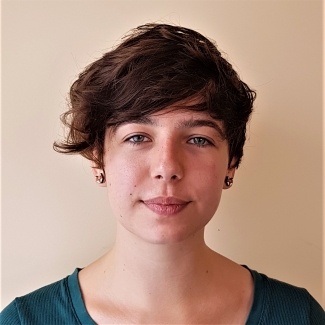Adam Kaufman
Marinelli
Matteo joined the group in April 2022. He completed his Ph.D. thesis in the group of Jonathan Home at ETH Zurich, where he investigated the use of mixed-species chains of trapped ions to perform proof-of-principle experiments of quantum error correction and quantum computation. After his Ph.D., he worked at the newly founded ETH-PSI Quantum Computing Hub as the trapped-ion experimental lead scientist, where he conceived and led the construction of the first experimental setup.
Tan
Ting You joined the Regal-Kaufman cryo-lab after completing his undergrad studies at the National University of Singapore. His love for atomic physics developed after spending a year in the group of Professor Christian Kurtsiefer. After learning the ropes of AMO physics experiments, he joined the group of Assistant Professor Travis Nicholson. For his honors project, Ting You helped to build the first Magneto-optical trap of Indium. Ting You will now help to construct a cryogenic Rydberg atom array experiment, exploring new physics with excitement.
Mcgrew
Will joined the lab in October of 2021, as an NRC postdoctoral fellow, after completing his doctoral studies on the ytterbium optical lattice clock experiment of Andrew Ludlow. In the Ludlow lab, he worked to characterize and improve the performance of the optical clock system, ultimately attaining performance at the level of a few parts in a quintillion in the metrics of systematic uncertainty, measurement instability, and reproducibility.




 The Physics Frontiers Centers (PFC) program supports university-based centers and institutes where the collective efforts of a larger group of individuals can enable transformational advances in the most promising research areas. The program is designed to foster major breakthroughs at the intellectual frontiers of physics by providing needed resources such as combinations of talents, skills, disciplines, and/or specialized infrastructure, not usually available to individual investigators or small groups, in an environment in which the collective efforts of the larger group can be shown to be seminal to promoting significant progress in the science and the education of students. PFCs also include creative, substantive activities aimed at enhancing education, broadening participation of traditionally underrepresented groups, and outreach to the scientific community and general public.
The Physics Frontiers Centers (PFC) program supports university-based centers and institutes where the collective efforts of a larger group of individuals can enable transformational advances in the most promising research areas. The program is designed to foster major breakthroughs at the intellectual frontiers of physics by providing needed resources such as combinations of talents, skills, disciplines, and/or specialized infrastructure, not usually available to individual investigators or small groups, in an environment in which the collective efforts of the larger group can be shown to be seminal to promoting significant progress in the science and the education of students. PFCs also include creative, substantive activities aimed at enhancing education, broadening participation of traditionally underrepresented groups, and outreach to the scientific community and general public.